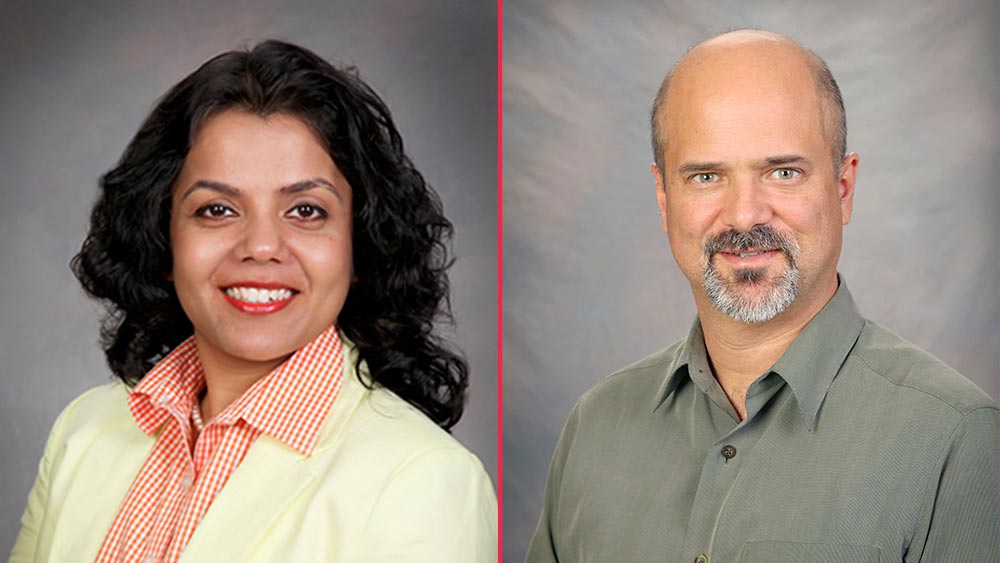
Assistant professors Dr. Shikha Prasad and Dr. Craig Marianno in the Department of Nuclear Engineering at Texas A&M University were both recently awarded a Triads for Transformation (T3) research grant.
Launched in 2017 as part of the 10-year, $100 million Excellence Fund, the T3 program supports collaborative research projects across various disciplines with a seed-grant fund of $30,000. The research teams must consist of three faculty members, two of which must come from different colleges or campuses.
Working alongside Dr. Mohammad Tabaar from the Bush School of Government and Public Service and Dr. Grigory Rogachev from the College of Science, Prasad is leading the investigation on tristructural-isotropic (TRISO) based fuel technologies using fast picosecond radiation detectors and electronics. This will allow the team to observe and measure nuclear fuel characteristics with little to no detector delay as it’s being used in a nuclear facility.
TRISO-based fuel technologies are most commonly used in next generation reactors. The high burnup time means that the fuel can last longer in the reactor, increasing its efficiency and longevity. However, it can also result in a dangerous byproduct: a significant amount of Plutonium-239 (Pu-239), something that can be used to create nuclear weapons.
“We hypothesize that the use of this technology will allow fuel elements such as TRISO pebbles to be used in the reactor for a longer time, thus increasing the amounts of Pu-239 and fission products,” said Prasad. “One of our goals is to determine if the gain in fission products is greater than the gain of Pu-239.”
This project will also help shape policy ramifications for countries looking to develop next-generation deep burn reactors. If more efficient reactors mean higher amounts of Pu-239, it will be paramount that policy safeguards and initiatives are introduced to ensure the proper handling and disposal of the special nuclear material byproduct.
Marianno received a T3 research grant for his work alongside Dr. Hans Schuessler in the College of Science and Dr. Gunnar Schade in the College of Geosciences. Together, they proposed an experiment that would monitor the amount of uranium hexafluoride (UF6) in the air from nuclear enrichment activities. Natural uranium is often enriched to increase the percentage of uranium-235 for use as fuel in nuclear reactors.
Trace amounts of UF6 are released as a byproduct when uranium enrichment occurs and this is to be expected — it’s likely not even enough to impact human health. The issue arises when we start to detect UF6 in areas where uranium enrichment has not been reported.
“When you see uranium hexafluoride in a place that shouldn’t have enriching activities, that’s a good indication that something suspicious is going on,” said Marianno. “That means that there may be nuclear activity occurring that has not yet been disclosed.”
Research such as this is invaluable to the International Atomic Energy Agency, which monitors safeguards around the world to ensure that people and countries are not misusing radioactive or nuclear technology for weapons. Marianno and his team will use an infrared spectroscopy technique, which is much more sensitive and accurate compared to mass spectrometry, to monitor the presence of UF6 gas in humid air. They hope to develop a portable platform that can be readily employed for field operation for nuclear safeguards and security purposes.